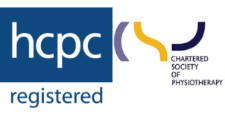Here at the Hove Physio we have been helping people with shoulder pain for many years. We are highly skilled at, not only treating the symptoms you’re experiencing, but identifying the underlying cause of your pain, to provide you with long term relief.
In your first appointment you will receive an individualised assessment and some treatment designed to help you and your specific issue. You will also leave the clinic room with the start of a rehab programme. Your rehab programme will be the long-term key to reducing pain and assisting you back to your sport, hobby or daily activity that you may be having difficulty with. It is important to establish specific goals to work towards within the first session. Using all the information gathered throughout the first assessment and with your specific goal in mind we can gauge the number of expected sessions, with the availability of discount if purchased as a package.
Shoulder pain is an extremely common symptom and can arise from many different structures (including ligaments, tendons, muscles and joints) or conditions. Therefore identifying pain originating from a single origin or structure can be difficult.
If you are getting shoulder pain, there might be a few different things you can try before, or in addition to, seeking advice from Physiotherapy. These can include...
Simple pain relief such as paracetamol and ibuprofen (please discuss these with your GP)
Reducing the amount of particular exercises or activities that increase the pain
Changing your sleeping position if you’re experiencing night pain
Common conditions that may cause shoulder pain include:
Rotator cuff or other muscle tendinopathy
Bursitis
Frozen shoulder or adhesive capsulitis
Osteoarthritis
Dislocation and ongoing instability
Fracture
There are factors that can contribute to shoulder pain. Some of these factors can be modified and some cannot be. Individual risk factors for shoulder pain, aside from trauma, include:
Repetitive use, especially overhead
Regular overload of the shoulder
A loss of outward rotation of the shoulder
A loss of overall range of movement in the shoulder
A rapid increase in workload
Recused strength and conditioning
With this in mind, here are a few good exercises to get you started on managing your shoulder pain. Please bare in mind that it is best to have an individual assessment to obtain a more accurate and specific rehab programme. However, these are a good place to start.
1: Outward rotation stretch.
Loss of external rotation can be due to muscle guarding and excessive activity of the shoulder internal rotators, or shoulder joint capsule stiffness. Now, everyone responds to stretching in different ways, so if you’re new to this stretch take your time and ease into it gradually. We would normally recommend starting with a 15-20 second hold and gradually increasing the time
2: Loaded supine flexion.
This exercise is attempting to increase the range of motion in the shoulder through flexion. It is nice to start this exercise without any weight and gradually increase. Keep the movement slow and steady, and only load the shoulder once it feels “warmed up”. Grab a light dumbbell and lie on your back, knees bent. Starting with the arm by your side, slowly lift the hand up to the ceiling and down passed your head. When you feel the arm reach the end of its range, slowly return to the start. Once you feel comfortable, you can add a slight pause at the end of the range when the arm is passed your head.
3: Wall Angels.
This exercise incorporates mobilising the shoulder joints together with assessing and mobilising the upper back (thoracic) spine (extension). This can be performed in sitting or standing. Important to keep your bum and upper back against the wall to focus the movement around the shoulders. An alternative to the wall angel, which focuses on rotation of the thoracic, is the single arm rotation against the wall. Before you start, position a ball or towel between your knee and the wall. Starting in a lunge position against the wall, slide the arm closest to the wall up overhead and round behind you.
4: Resisted Overhead Press.
Using a band with this exercise will strengthen your rotator cuff muscles, along with other key shoulder muscles, while at the same time challenging your shoulder stability. The bands can be changed to make the exercise more or less difficult. You can change to single arm once your strength starts to improve, providing you can maintain a good standard of stability/balance/posture while performing the exercise.
5: The Simple Push-Up.
This exercise is old school but for good reason. It strengthens muscles and tests shoulder stability. Another benefit to this exercise is the number of modifications that can be made to suit different ability levels.
These exercises should be performed 3-4 times a week, with a day’s rest in between. It is important to monitor how your shoulder pain reacts to them and modify as required. Stop any exercise that causes high levels of pain during and long-lasting pain after stopping the exercise or movement.
Written by Hove Physio


